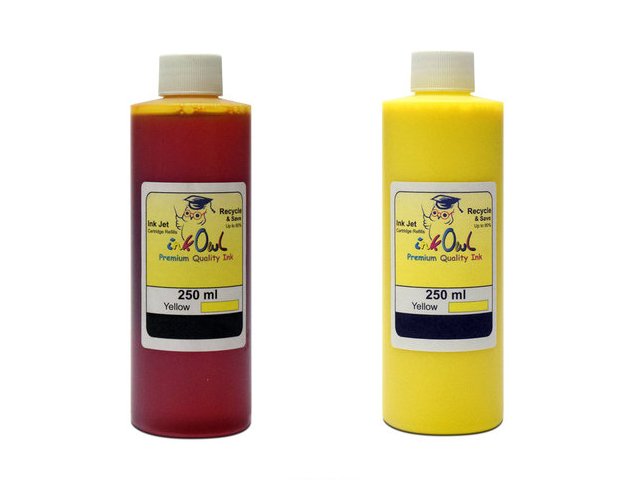Dye and pigment inks are quite different and thus each have their own benefits. Differences include:

Knowing how each ink type works can help you when deciding which kind of printer to buy.
Dyes are essentially water-based, colored liquids. Being water-based, they are not water-resistant, and the dye itself is not naturally UV-resistant. Some dye inks are made more fade resistant by adding a UV protector to the ink (almost like a sunscreen) designed to improve their longevity. However, they could never be considered truly archival (the property of being suited for storage or display for decades or even centuries). A dye stains the medium it contacts instantly, at the root of its fibers. Because dyes stain the paper's fibers, they can print on a wide array of papers and are especially good at printing on glossy paper.
Pigment inks are made up of two parts, the pigment particles (which is essentially powder) and a carrier liquid designed to suspend the pigments once mixed so that they can be spread evenly during printing. Pigments are naturally UV resistant and are considered archival. The pigments in the ink embed themselves into the fibers of the paper while the carrier liquid evaporates. This property is what makes them smear-resistant and allows them to work excellently on matte paper. To stick to glossy paper, binders are added to the ink allowing them to adhere to the surface of the paper since the surface of most glossy paper is not porous enough for the pigments to penetrate it. A drawback to the use of binders is that by sitting on the paper as opposed to within it, a bronzing effect occurs, especially with dark black areas. To mitigate this effect, choose glossy papers designed for pigment inks, or avoid glossy paper altogether and instead print on high-quality matte paper with pigment ink.
Because each ink type is best suited for different jobs, printer manufacturers have chosen the most appropriate ink combinations for each use. Entry-level printers usually use an inexpensive pigment black ink combined with dye color inks. This way when printing documents, you will obtain darker blacks that will avoid smearing, but when printing on glossy paper, the ink holds well. Business printers sold today predominantly use pigment inks due to their water-resistant properties which make highlighting painless. Entry-level photo printers will use dyes because they are cheaper and better at sticking to photo paper, but as you get to professional level printers, they too will use pigments for the added longevity.
Pigments, in general, are used by most professionals in any field where printing is important such as fine art, professional photography, and graphic arts. Pigments last longer without fading and resist smearing. Dyes, however, are more economical and can easily print on many different paper types (especially glossy paper) making them ideal for household printing and amateur photography. Printers are designed for specific ink types and so it is important to use ink that matches the original ink specifications as InkOwl inks do. It's also always a good idea to check our website before getting a new printer to see what refilling solutions are available to you.
Sorry, the page you were looking for wasn't found, please try again later or
refresh